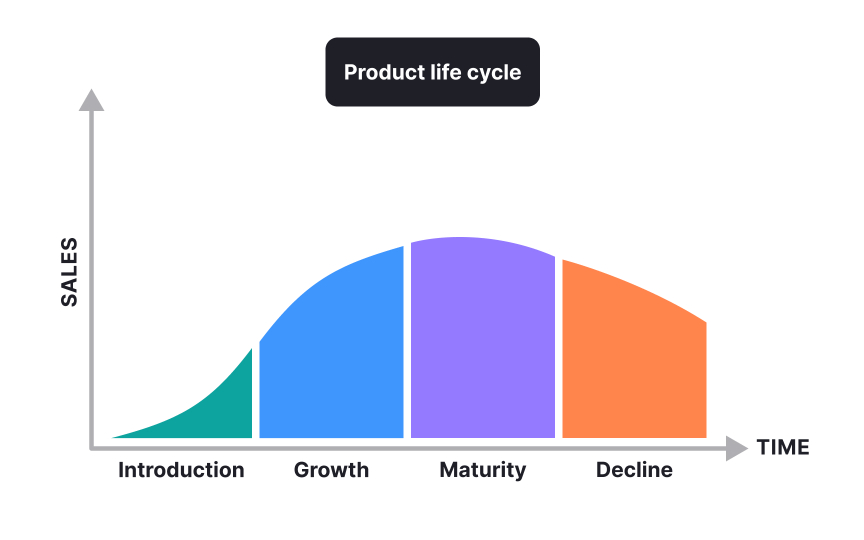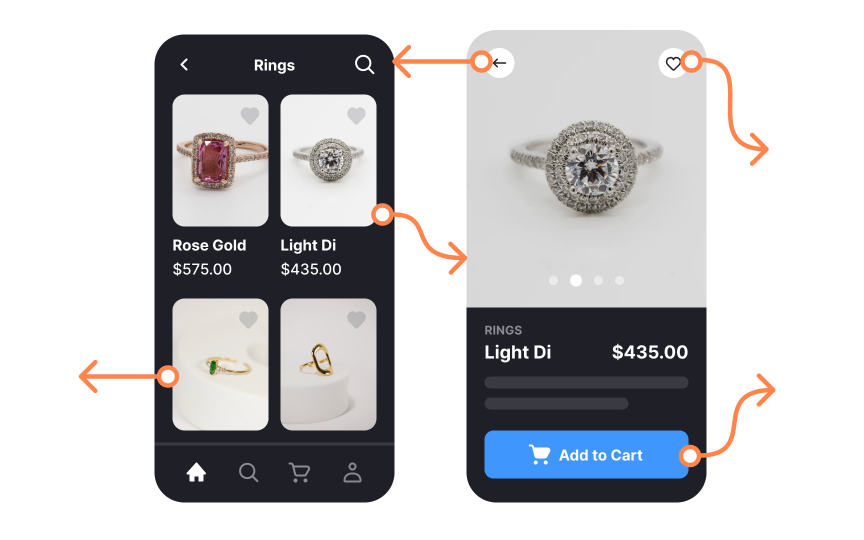Product Development Stages
Understand how products move from idea to launch by following the structured stages of development.
Every product, whether a service, an app, or a physical good, begins as an idea. What transforms that idea into something real is not chance but a structured process. This process is captured in the product development life cycle (PDLC), which provides clear stages for shaping, testing, and building ideas into working solutions. These stages matter because they guide teams through uncertainty, reduce risks, and ensure resources are invested in the right direction. By treating each stage as a checkpoint, teams can align creativity with discipline and move closer to solutions that serve both users and the business.
The PDLC gives structure to product creation. Early stages focus on defining the problem and generating ideas, while later ones validate solutions with users, refine designs, and prepare for launch. Having a shared understanding allows designers, engineers, and managers to speak the same language, making collaboration smoother and outcomes stronger.
It is important to distinguish the PDLC from the product life cycle. The PDLC is a precursor, ending once the product is launched. From that point, the product life cycle begins, describing the product’s journey in the market through introduction, growth, maturity, and eventual decline. Taken together, the two cycles show both how a product comes into existence and how it performs over time, giving teams a complete view of its path from idea to outcome.
There is no single agreement on what the product development cycle includes. Some organizations argue about how many stages it should have, and even those who agree on the number often disagree on where one ends and another begins. Another common point of debate is scope. For some, the cycle stops at launch, while others extend it to include updates and improvements made after release.
The product development cycle can be defined as the structured process of transforming an idea into a product that can be launched and improved over time. Its stages provide a clear framework for moving from concept to reality. Having such a structure reduces uncertainty, prevents wasted effort, and ensures that every step connects back to user needs and business goals. The stages exist to guide teams through complexity with discipline, making it more likely that their product will succeed in a competitive market.[1]
Product development and product management are often linked but they focus on different responsibilities. Development is the structured process of bringing a product to life. It covers activities such as research, design, prototyping, testing, and launch. Development ensures that the product is built, functional, and ready for use.
Management is broader. It defines what should be built and why, setting the product vision and aligning it with business goals. It considers customer needs, market opportunities, and long-term growth strategies. While development answers the “how,” management provides the “what” and “why.” Both are essential, and when they operate together, the product is not only built effectively but also guided by a clear direction that makes sense for the company and its users.[2]
The
The product life cycle begins only after launch and describes how a product performs in the market. It includes the introduction, growth, maturity, and decline stages. Understanding the difference between the two helps teams separate the act of creating a product from the process of managing its lifespan. Development ensures the product is built with care, while the life cycle shows how it evolves once customers begin to use it. Recognizing both perspectives is critical for strategic planning.
The development journey begins with ideas, but not all ideas become successful products. Market
This stage also prevents teams from rushing into features that look impressive but fail to address the core problem. Imagine a new fitness app. The team might want to add leaderboards, achievements, and badges right away. However, if the app does not first solve the basic challenge of helping users reliably track workouts, those extras add little value. Research keeps focus on solving the right problem before investing in layers that may never be used.
Once a concept passes
Consider the example of mobile banking apps. Instead of building the full platform immediately, many teams first test simple prototypes that focus on essential actions like checking balances or transferring money. If users struggle to find these core functions in the
Validation confirms whether an idea is worth building. At this stage, teams test if the product solves a real problem, if people are willing to pay for it, and whether the market is large enough to support growth. Methods can include surveys, waitlists, pre-orders, or launching a minimum viable product.
A clear example comes from consumer packaged goods. A study found that nearly 25% of new products vanished from shelves within the first year, often because they were built before demand was validated. To avoid this, many startups use crowdfunding campaigns to gauge interest. Pebble, an early smartwatch, validated its concept through Kickstarter by raising over $10 million in pre-orders before production. This proved that customers wanted the product and were willing to pay for it, giving the company confidence to invest.[5]
Validation reduces the risk of building “nice-to-have” products that nobody actually uses. It is not a one-time task but an ongoing process that protects resources and ensures alignment with user demand.
The development and testing stage is where the product is built, iterated, and refined. Teams often use agile methods to create functional versions in small cycles. Testing goes beyond fixing bugs— it checks
Duolingo, for example, embraces a “test everything” mindset and conducts hundreds of A/B experiments simultaneously to guide product decisions. This rigorous testing helps the team know whether something like a gamified notification or lesson sequence improves user engagement before rolling it out widely.[6]
Even small changes may affect learning outcomes or retention, so testing lets Duolingo evolve with confidence instead of guesswork.
Such iterative development and testing reduce costs, boost quality, and help teams launch features that truly serve users. This steady refinement leads to products that are both reliable and aligned with real user needs.
A successful launch is more than a release date. It requires the orchestration of product, marketing, support, and strategy to create the right impact. Launch teams must ensure that the product is polished, stakeholders are aligned, documentation is in place, and early users can adopt the product smoothly.
Slack shows how diligence here pays off. Before going public, the team used Slack internally to refine the product and understand usage patterns. They watched for signals, such as when early users sent around 2,000 messages, which indicated real team adoption and value.[7] This allowed them to address
In contrast, Google Glass failed to prepare for mainstream launch needs. Privacy concerns, unclear user benefits, and missing communication on its value undermined adoption. The high cost and social discomfort caused widespread rejection, and the product was pulled from the market within a year.[8]
These contrasting experiences show why launch preparation must include internal testing, clear messaging, and stakeholder readiness, not only the product itself.
Launching a product is just the start. Post‑launch monitoring helps teams understand how customers engage with the product, whether it meets expectations, and what needs improvement. Keeping an eye on metrics like user activation, adoption rates, feature usage, and
For instance, the Golfshot app launched its Auto Shot feature by first tracking usage data from watches and phones during early access. This helped the team assess readiness and fine-tune the feature before full release. Afterward, they monitored adoption and usage to guide updates and improve the user experience in real time.[9]
Post-launch tracking also helps teams react quickly if issues emerge. A tech company learned that only 45% of users engaged with a new software in the first quarter. By forming a task force to enhance
Together, these examples show that active monitoring enables continuous learning and adjustment, turning launch data into better product outcomes.
Strong products arise from strong teams. Cross‑functional collaboration brings together product managers, designers, engineers, marketers, analysts, and other specialists to solve problems from multiple angles. These teams share context, reduce silos, and innovate faster.
Apple’s development of the first iPhone is a classic example. Under “Project Purple,” design, hardware, and software engineers worked side by side through
Cross-functional teams thrive when they balance diverse expertise with shared purpose.
References
- Product Development Cycle | ProductPlan
- Improving Duolingo, one experiment at a time | Duolingo Blog
- Product Strategy: Learnings from Slack’s Rapid Ascent | ProductPlan
- Why Google Glass Failed | Investopedia
Topics
From Course
Share
Similar lessons

Product Development Lifecycle

Opportunity Ideation



















